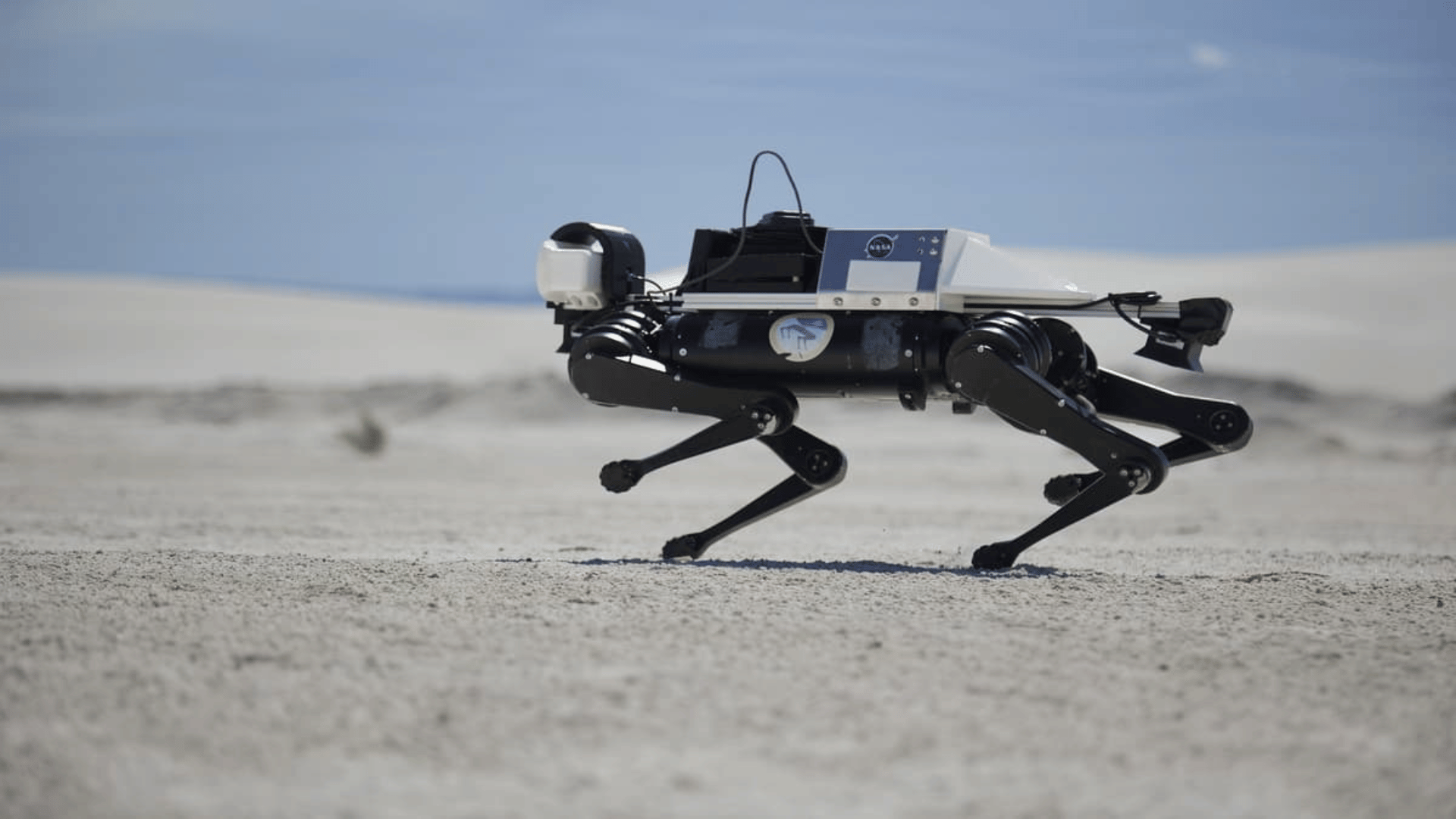Researchers are testing a dog-like robot across the terrain of White Sands National Park to prepare the bot for a trip to Mars.
This area was chosen for the field experiment due to its rippling slopes and shifting surfaces, which resemble those found on the red planet. The trials are part of a NASA-funded effort tied to the agency’s Moon to Mars program, which aims to develop technologies for extended space missions.
Robot Space Explorer in Training

Engineers and scientists from Oregon State University drove the robot through rugged, hot, and sandy terrain for five days this month. The tests were meant to assess whether the robot could adapt to the rough environment and make decisions in real time.
“In the same way that the human foot standing on ground can sense the stability of the surface as things shift, legged robots are capable of potentially feeling the exact same thing,” said Cristina Wilson, a robotics researcher in the College of Engineering at Oregon State University, according to Interesting Engineering.
“So each step the robot takes provides us information that will help its future performance in places like the Moon or Mars.”
As the robot moved through the sand, its feet recorded subtle changes in resistance and texture. Refined algorithms allowed the machine to walk without direct commands, pausing, choosing routes, and adapting to the surface on its own.
Having a robot capable of acting independently is crucial for space missions because communication from Earth can sometimes lag by minutes. This allows the bot to make decisions autonomously, without always needing to wait for instructions.
In recent years, researchers have also tested dog-like robots on Mount Hood in Oregon. The area’s icy volcanic slopes mimic the landscape of the Moon’s poles.
The initiative, titled the LASSIE Project (Legged Autonomous Surface Science in Analog Environments), involved cognitive scientists, geoscientists, engineers, and planetary researchers from Oregon State, USC, Texas A&M, Georgia Tech, the University of Pennsylvania, Temple University, and NASA’s Johnson Space Center.
The research is funded by the NASA Planetary Science and Technology through Analog Research (PSTAR) program, and the Mars Exploration Program.
“Our group is very committed to putting quadrupeds on the Moon and on Mars,” said Cristina. “It’s the next frontier and takes advantage of the unique capabilities of legged robots.”
“There is certainly a lot more research to do, but these are important steps in realizing the goal of sending quadrupeds to the Moon and Mars,” she added.







